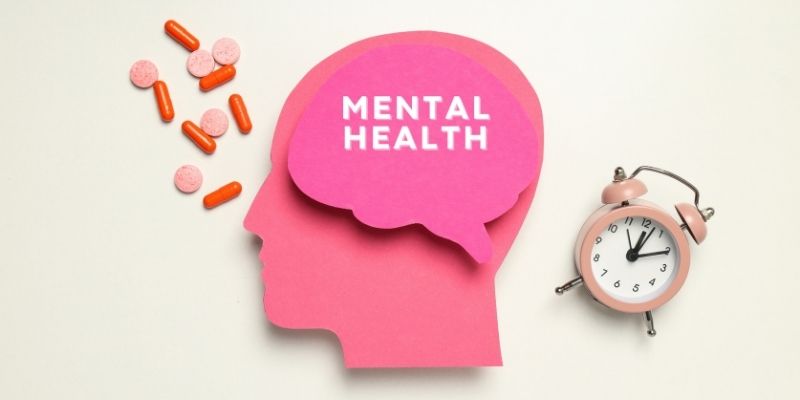The fitness industry has long prioritized discipline, effort, and tangible results as key components of staying healthy. But in this high-energy setting, little habits can go unnoticed—behaviors that, over time, start to hurt both physical and mental health. These actions aren't usually visible or spectacular. In reality, they are frequently hidden by devotion, achievement, and even praise from peers. However, below, they reveal a deeper issue that needs to be addressed, cared for, and changed.

The Fine Line Between Being Committed and Being Obsessed
People typically praise consistency in the world of fitness. People often believe that having a regular gym program, eating mindfully, and being able to motivate oneself are signs of success. But things become more complicated when these routines become inflexible, when rest seems like failure, or when eating becomes a way to control instead of feed. Behaviors that are out of order don't necessarily seem excessive; they frequently start as somewhat "more intense" versions of what is normal.
Some clients may want to exercise even when they're hurt, be afraid of missing a single session, or punish themselves with additional cardio for eating dessert. People may appreciate these behaviors on social media, but they show an imbalance. These practices are neither healthy nor sustainable in the long run. Any coach or trainer who works directly with clients must be able to distinguish between a healthy structure and a destructive rigidity.
Why Fitness Professionals Need to Pay Attention
Trainers and coaches are in a unique situation. They visit clients many times a week, hear about their everyday lives, and observe the ups and downs of their emotions that come with trying to reach performance objectives. This persistent presence gives you a chance that few people have: the possibility to see subtle but essential changes over time. These might include slight changes in weight, the need for constant monitoring, frequent injuries, or feeling unwell after skipping an exercise.
Fitness practitioners are not required to identify or treat disordered eating or exercise addiction when it comes to the health of their clients. But they have a moral duty to notice when something doesn't feel right. When clients start to regard their workout regimen as "good" for burning calories or "bad" for relaxing, it indicates a larger issue. Listening and watching carefully makes coaches the first line of help for dealing with these habits.
The Unseen Cost of Normalized Gym Culture
In many gyms, certain activities have become standard that can cause an imbalance. There is a culture of intense discipline that has developed around concepts such as "no days off" and "earn your food," as well as a continual emphasis on transforming one's physique. These messages may appear to be intended to motivate people, but they may put customers in a dangerous mindset. The result is a system that praises weariness and questions moderation.
Trainers who focus on how a body appears instead of how it feels are unwittingly reinforcing dysfunctional thinking. If you don't know why someone is losing weight or if you tell them to exercise as punishment, you might make them do even more bad things. Changing this story is a crucial aspect of maintaining client health in the context of responsible coaching.
Seeing the Signs Before It's Too Late
Behaviors that are out of sequence don't show up overnight. They grow over time, typically beginning with good intentions to be healthier or more focused. However, over time, such habits start to dominate a person's daily life and emotions. Clients may exhibit indicators such as obsessively tracking their food intake, being overly anxious about dining with others, overexercising even when tired, or experiencing emotional breakdowns over minor issues.
It's hard to see these indications since they frequently seem like commitment. This is why all fitness practitioners need to be aware of and consider the implications of their actions. Given the hazards, catching it early helps prevent it from worsening. A coach's simple, kind inquiry or moment of worry might help a client rethink their course before it becomes perilous. The objective is not to fight but to help. You want to provide a setting where clients feel secure to talk about their problems instead of hiding them.
Helping without going too far
One of the most challenging aspects for trainers to navigate is determining where their responsibilities begin and end. They are not mental health specialists, yet customers typically turn to them first with personal problems. This gives you the chance to help, but it also means you have to send someone else to get help. It's not about fixing the issue; it's about providing the appropriate type of support.
In this case, empowerment involves helping clients find specialists who can assist them with their eating disorders, mental health issues, or nutritional needs. It consists in being clear, honest, and careful when discussing behavior that worries you. Using language like "I've noticed..." or "How have your workouts been going lately?" allows the other person to talk without feeling judged. If you ask these questions with care, they may lead to real change. The goal is to create a system of care in which the client feels seen, heard, and directed to resources that will help them.

Conclusion
In the world of fitness, where objectives are typically loud, and success is enthusiastically shown off, the quieter battles sometimes go undetected. But these are the times that may either hurt or heal. It's not about judging or blaming customers when you see them acting out; it's about caring. It's about viewing the individual as a whole, not just their appearance or job performance.
When we perform our jobs with intelligence and care, we become more than just trainers; we become integral parts of someone's journey. We help people get their relationship with food and movement back on track. We provide them with the skills, space, and confidence they need to find balance. Most importantly, we tell them that health is not a goal that numbers can quantify; it is a way of life based on self-respect and awareness. Building that is the future of fitness.












